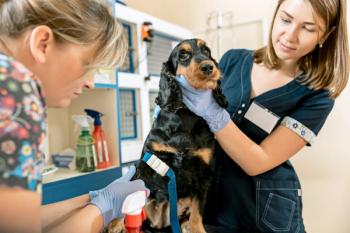
Women become AVMA majority
The nation's largest veterinary association now is larger, and more feminine.
Schaumburg, Ill.
-- The nation's largest veterinary association is more feminine than ever.
New market research statistics released March 9 by the American Veterinary Medical Association (AVMA) indicate the group achieved its highest membership level to date, with 80,116 members in 2009 -- a nearly 2 percent increase over 2008 and a more than 7 percent jump since 2006.
More interesting, according to AVMA, is the fact that female members are now the majority.
"About three years ago, based on our ongoing research, we were able to predict that women would soon outnumber men in the veterinary profession," says Allison Shepherd, AVMA's senior manager of marketing research.
The shift from a male to female-dominated profession reportedly came last year with estimates of 44,802 female veterinarians compared to 43,196 male DVMs. AVMA estimates that men still outnumbered women in 2008, with 43,287 male vets compared to 42,690 female DVMs, while the trend of more women entering the profession started in the 1980s.
Veterinary schools now enroll about 70 to 80 percent female students, according to reports from the colleges.
Another shift occurred in the number of veterinarians seeking board certification. AVMA reports the trend is believed to be in response to pet owner's demand for a higher level of veterinary care. Referral and specialty practice veterinarians increased by 173 percent from 2006 to 2009 -- and by about 16 percent just in the last year. Specialty colleges statistics reveal a similar trend, noting there were 9,826 active board-certified diplomats in 2009 -- more than 15 percent more than 2006. Internal medicine specialties increase by 11 percent over the last year along, adds AVMA.
"The increasing demand for veterinary specialists is something we've known was happening for some time, but this data helps us understand and track this trend," says AVMA President Dr. Larry Corry. "As the human-animal bond continues to grow, veterinarians are being asked by pet owners to provide increasingly advanced treatments, and this is driving them into specialties like internal medicine, neurology and oncology."
Other significant increases among veterinary employment types can be seen in private clinical practice -- which increased by 20 percent from 2008 to 2009 -- and in emergency and critical care medicine -- which increased over the last year by almost 14 percent. Decreases were marked in non-federal government employment with a nearly 7 percent drop and is veterinary college employment, with a more than 1 percent decrease from 2008 to 2009. Additionally, employment of veterinarians by humane organizations increased by almost 7 percent from 2008 to 2009, and by 46 percent over the last three years.
In more general categories, species trends illustrated the decline of veterinarians in the food-animal sector, with the number of veterinarians practicing food-animal or mixed-animals medicine decreasing by nearly 1.5 percent over the last three years -- 0.8 percent in the last year alone. In contrast, companion animal practitioners increased by more than 9 percent over the last three years -- nearly 2 percent from 2008 to 2009 -- and the number of equine veterinarians rose by about 6 percent from 2006 to 2009.
AVMA collects and analyzes membership data to better understand its population and to best serve the membership's needs, Corry says.
To see additional market statistics collected by AMVA, visit
Newsletter
From exam room tips to practice management insights, get trusted veterinary news delivered straight to your inbox—subscribe to dvm360.




